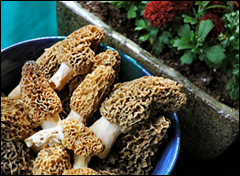The news from NOAA is that all our dawdling on climate action this decade is having real impact on the atmosphere:
- Concentrations of CO2 jumped 2.4 ppm in 2007, taking us to 385 ppm (preindustrial levels hovered around 280 through 1850).
- That is an increase of 0.6 percent (or 19 billion tons). If we stay at that growth rate, we’ll be at 465 ppm by 2050 — and that assumes (improbably) that the various carbon sinks don’t keep saturating (see here and here).
- Levels of methane (a far more potent greenhouse gas than CO2) rose last year for the first time since 1998, perhaps an early indication of thawing permafrost.

Why this recent jump in methane? NOAA says:
Rapidly growing industrialization in Asia and rising wetland emissions in the Arctic and tropics are the most likely causes of the recent methane increase, said scientist Ed Dlugokencky from NOAA’s Earth System Research Laboratory.
I have previously noted the especially rapid warming in the same area as most of the Asian tundra.
“We’re on the lookout for the first sign of a methane release from thawing Arctic permafrost,” said Dlugokencky. “It’s too soon to tell whether last year’s spike in emissions includes the start of such a trend.”
Permafrost, or permanently frozen ground, contains vast stores of carbon. Scientists are concerned that as the Arctic continues to warm and permafrost thaws, carbon could seep into the atmosphere in the form of methane, possibly fueling a cycle of carbon release and temperature rise.
The time to act is yesterday.
This post was created for ClimateProgress.org, a project of the Center for American Progress Action Fund.



